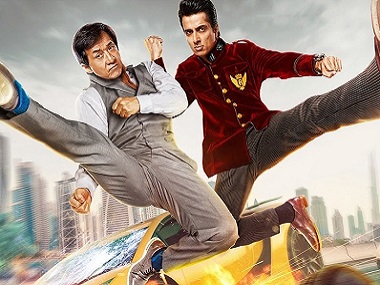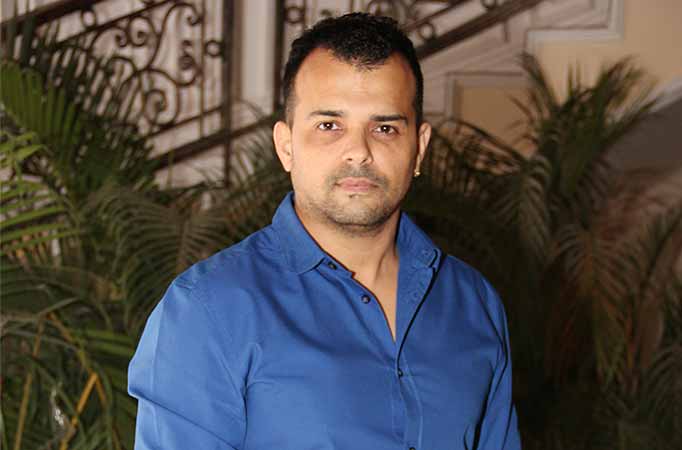
Kung Fu Yoga: Why Indian film industry can’t forget Jackie Chan-starrer in a hurry
Early reports demonstrate Kung Fu Yoga is not doing admirably monetarily, notwithstanding Jackie Chan’s fame. A daily paper article expresses that only 14 watchers watched the film on its discharge day (3 February) in a Mumbai multiplex. As per a film industry delegate, it is required to improve in south India than whatever is left of the nation. Be that as it may, its general execution is probably not going to be great. The effect of Kung Fu Yoga on India’s film exchange will be restricted. Even under the least favorable conditions, the merchant and his wholesalers remain to lose cash. Little change, for an industry that routinely neglects to recoup creation costs from the movies. By and by, Kung Fu Yoga is not a film which the Indian film industry can stand to overlook in a rush. Since it was a part of a goal-oriented — and possibly amusement changing — arrange by the Chinese and Indian governments.
The film has been panned by Indian faultfinders as well. Kung Fu Yoga’s disappointment on basic and business fronts in India is a pointer to a bigger issue that Indian and Chinese film ventures confront constantly. Unexpectedly, this film was intended to address the very issue that it now remains as the most recent case of. A larger part of Indian and Chinese movies acquire their incomes from watchers who are of Indian or Chinese source, by and large. Both ventures battle to acknowledge an incentive from business sectors past the abroad markets where there is a noteworthy nearness of ostracizes. Obviously, we have to extend our comprehension of the expat to incorporate the South Asian diaspora and “Three Chinas” (Mainland China, Taiwan, Hong Kong) in addition to Singapore, with reference to Indian and Chinese silver screens individually.
Kung Fu Yoga’s lackluster display in India is not for the need for exertion. Obviously, Aamir Khan and Katrina Kaif were drawn closer, yet were inaccessible. Accordingly, the last lineup of Indian on-screen characters, which incorporates Sonu Sood, Disha Patani and Amyra Dastur, is not precisely stellar. Unflinching, Jackie Chan enchanted his Indian fans and neighborhood media delegates alike amid his tremendously pitched limited time visit in the keep running up to the film’s discharge. I don’t wish to go into why it didn’t work — a few analysts have done that as of now. Rather, I might want to attract consideration regarding two focuses. To begin with, the film worked for Chinese groups of onlookers and faultfinders alike. Second, this is a fizzled Indo-Chinese co-creation.
Kung Fu Yoga earned US $ 138.8 million (around Rs 940 crore) in the cinematic world in China alone amid the principal week of its discharge. That is twofold the assessed cost of the film. Outstandingly, the film’s takings are now path higher than the overall accumulations of India’s best film, Dangal. All the more imperatively, it helps us to remember the measure of the Chinese market and the drawing force of Jackie Chan.
Discharged amid the Chinese New Year (CNY) end of the week, which as a rule witnesses the most astounding footfalls in theaters amid the whole year, Kung Fu Yoga rose as the second most noteworthy grosser of the season, after Journey toward the West. The accomplishment of the current year’s CNY discharges is said to have brightened up the Chinese film industry, which had a dull year in 2016. By chance, Journey toward the West is coordinated by Tsui Hark and delivered by Stephen Chow (of Kung Fu Hustle popularity), both of whom are Hong Kong industry stalwarts.
China’s amount framework guarantees that entrance of remote organizations to its colossal film market is seriously confined. At present, just two Indian movies can be discharged in China yearly, as indicated by the site China Film Insider. This number is probably not going to increment in a rush. In 2016 the standard for remote movies, a main part of which are Hollywood creations, remained at 34. The main other way Indian creation organizations can enter this market is by making co-generation manages Chinese organizations. Everybody in the film business knows this be that as it may, as usual, the unseen details are the main problem: whom to work with, with what stories, et cetera.
After the accomplishment of 3 Idiots in China in 2011, an Indo-Chinese co-generation titled Gold Struck was reported. Hong Kong activity authorities Tony Cheung and Cory Yeun should coordinate this film, which was is said to have reserved in both Amitabh Bachchan and Jackie Chan. Shooting was required to start in 2013 for a 2015 discharge. This venture has either been deferred, or discreetly racked.
The greatest improvement on the Indo-China amusement front happened in September 2014, amid Xi Jinping’s state visit. Both nations marked a co-creation arrangement which, in addition to other things, would permit Indian organizations more noteworthy access to the Chinese market.
The main Sino-Indian co-creation to have been finished in the wake of this arrangement was the biopic Xuanzang (coordinated by Huo Jianqi, 2016). Co-created by the administration possessed China Film Group Corporation and Eros International, Xuanzang depended on the goes of the eponymous seventh Buddhist minister (Hiuen Tsang in Indian reading material) who abandoned a significant record of Indian history and culture. It is delivered by the honor winning Hong Kong chief, Wong Kar-Wai and was China’s legitimate passage in the class of Best Foreign Language Film at the Oscars. Tragically, the film did not make it to the waitlist. Similarly as with Kung Fu Yoga, the most noticeable Indian on-screen character in Xuanzang is Sonu Sood.
Kung Fu Yoga is by a long shot the most unmistakable of the three co-preparations reported in the wake of Xi Jinping’s visit. The second to be finished, the film has a few fixings that, in principle, would make it a perfect hybrid film. It was shot incompletely in India and the story too is fixated on Indo-Chinese joint efforts, over a wide span of time. The film is “about” the significance of History (yes, with a capital). What’s more, it is a Jackie Chan film completely. It is woven around the nostalgic review of Chan’s more established vehicles and different layers of intertextual references to his own and Hollywood enterprise movies. In this film we see the star replaying his own parts in works of art like Armor of God. At the end of the day we see him in play the non-white, not really macho and tongue-solidly in-cheek Indiana Jones sort pilgrim. At that point as now, no one kicks the bucket in the battle groupings.
After all the powerful tact going before its declaration, this is not an Indo-Chinese co-generation. Viacom 18, the Indian arm of the American media goliath Viacom Inc., was to accomplice Chinese creation organizations Shinework Media and Taihe Entertainment really taking shape of Kung Fu Yoga. In any case, for reasons that were not made open, Viacom 18 hauled out of the venture in October 2015, not long after chief shooting for the film started in Dubai. As I stated, the demon is dependably in the detail.
While the achievement of the film in China is uplifting news for film buffs and governments on both sides, the withdrawal of Viacom 18, and the Indian gathering of the film, are clear signs that advance, assuming any, will be agonizingly moderate.
Beginning reports of the film’s run USA propose that it has had a constrained discharge and is not precisely having an effect there either. Like most Chinese movies, including the enormous CNY season hits, Kung Fu Yoga too will neglect to go past gatherings of people of Chinese source. How much like our own special Diwali, Sankranti and Eid hits this film has turned out be!






Comments (0)